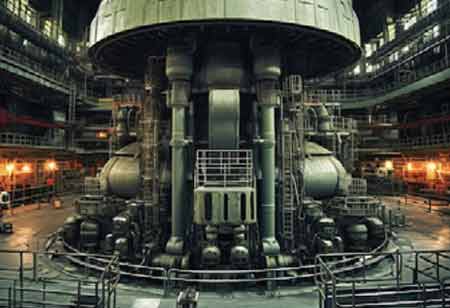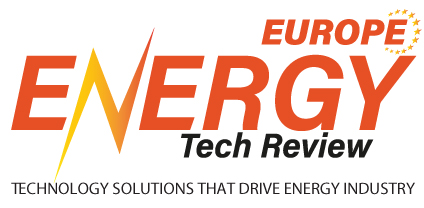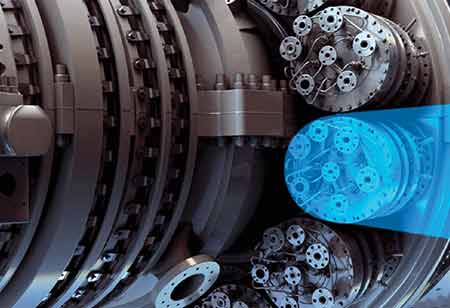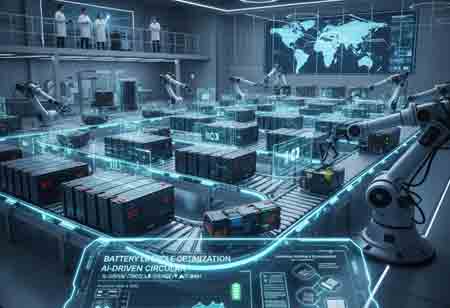CLOSE
Specials
I agree We use cookies on this website to enhance your user experience. By clicking any link on this page you are giving your consent for us to set cookies. More info
Be first to read the latest tech news, Industry Leader's Insights, and CIO interviews of medium and large enterprises exclusively from Energy Tech Review
Thank you for Subscribing
Digital Twins: A Game Changer for Nuclear Safety Standards
Digital Twins revamp nuclear maintenance by enabling safe remote operations, enhancing reliability, and shifting from reactive to proactive maintenance through real-time data insights.

By
Energy Tech Review | Tuesday, October 28, 2025
Stay ahead of the industry with exclusive feature stories on the top companies, expert insights and the latest news delivered straight to your inbox. Subscribe today.
Fremont, CA: The nuclear energy sector is transforming due to the integration of advanced technologies, including Digital Twins. These technologies enable the simulation of remote operations with high safety and precision, enhancing nuclear facilities' reliability, efficiency, and integrity and contributing to a secure and sustainable energy future.
The Essence of Digital Twins in Nuclear Maintenance
A Digital Twin is a virtual replica of a physical asset, system, or process, meticulously crafted through the integration of real-time data, historical performance records, and sophisticated simulation models. In the context of nuclear maintenance, this means creating a dynamic, living digital counterpart of an entire nuclear power plant, or even specific critical components within it. This virtual twin acts as a comprehensive, continuously updated information hub, reflecting the exact operational status, health, and behavior of its physical counterpart.
The core strength of a Digital Twin lies in its ability to bridge the gap between the physical and digital worlds. Sensors strategically placed throughout the nuclear facility continuously feed data into the digital model, ensuring that the virtual environment accurately mirrors the real-world conditions. This real-time synchronization allows for an immediate and precise understanding of the plant's operational state, a critical factor in an industry where even minor deviations can have significant consequences.
Simulating Remote Operations for Enhanced Safety
One of the most transformative applications of Digital Twin technology in the nuclear industry is its role in enabling precise, efficient, and safe remote maintenance operations. Given the hazardous nature of atomic environments—characterized by high radiation levels, confined spaces, and complex machinery—direct human intervention often poses significant risks. Digital Twins offer a robust solution by creating a virtual representation of physical systems, providing a safe environment where maintenance procedures can be planned, simulated, and optimized without endangering personnel.
Before any physical intervention is carried out, engineers and operators can utilize the Digital Twin to meticulously pre-plan complex tasks. Maintenance procedures such as disassembling and reassembling critical components can be virtually rehearsed, allowing teams to simulate every step—from tool selection to personnel movement—while identifying potential inefficiencies or safety concerns. For operations requiring robotic or remotely operated vehicles (ROVs), the Digital Twin serves as an essential platform for developing and validating control strategies. Operators can refine algorithms, test sensor feedback, and practice maneuvering in a risk-free setting, significantly enhancing the effectiveness and safety of remote interventions.
The value of Digital Twins in nuclear maintenance is further amplified by their capacity to deliver data-driven insights. By continuously collecting and analyzing vast amounts of operational data, Digital Twins shift maintenance from a reactive to a proactive discipline. Predictive maintenance becomes possible as Digital Twins monitor component health and detect subtle anomalies that may signal future failures. Using historical data, sensor inputs, and material degradation models, potential issues can be identified and addressed during scheduled outages, avoiding costly unplanned downtime.
Real-time diagnostics and anomaly detection are also greatly enhanced. Digital Twins leverage advanced algorithms, often powered by artificial intelligence and machine learning, to detect deviations from normal parameters and quickly diagnose root causes. This rapid analysis provides operators with actionable insights to resolve issues accurately and efficiently.
The integration of Digital Twins is fundamentally reshaping the landscape of nuclear maintenance. It moves the industry towards a paradigm of continuous monitoring, intelligent decision-making, and proactive intervention. This evolution promises to enhance further the safety, reliability, and economic viability of nuclear power, ensuring its vital role in meeting global energy demands.

Copyright © 2025 Energy Tech Review. All rights reserved






